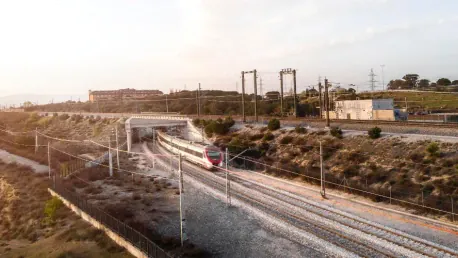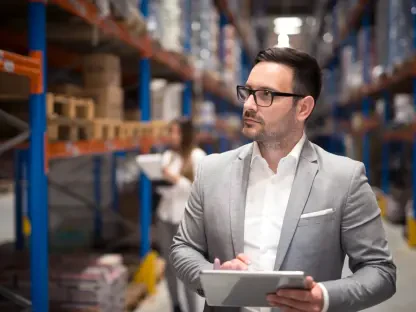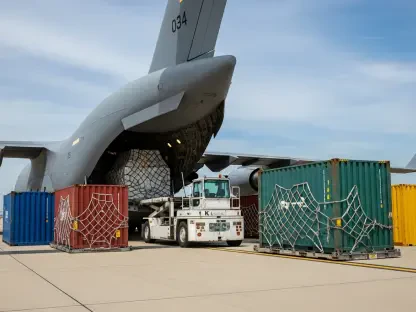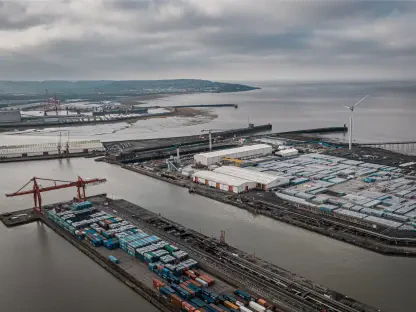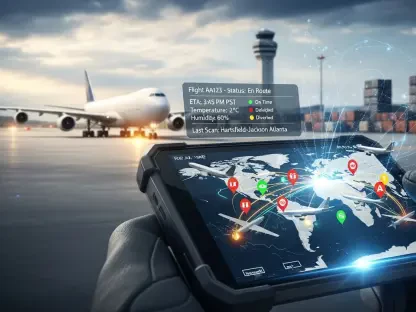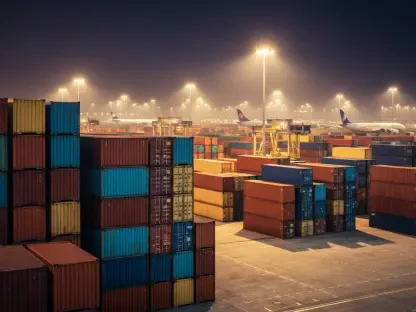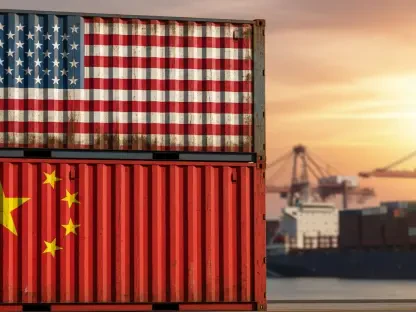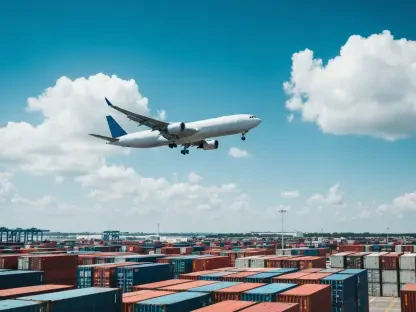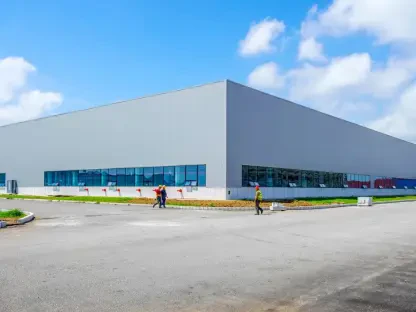The logistics industry is undergoing a significant transformation as companies strive to reduce their carbon footprint and improve sustainability, a key challenge being the “middle mile” of the delivery process. Involving the transportation of goods from distribution centers to urban areas, this segment traditionally relies heavily on diesel-powered heavy goods vehicles (HGVs), contributing to substantial emissions. However, innovative solutions are emerging to address this issue, paving the way for a more sustainable future in logistics.
The Middle Mile Challenge
Traditional Logistics Journey
In the UK, a typical logistics journey begins at a distribution center, often located in the Midlands, with goods being loaded onto a diesel-powered HGV. This HGV then transports the products to another center near the final destination, such as Bristol. From there, a diesel or petrol-powered vehicle carries the goods into the city, where a cargo bike completes the final leg of the delivery to the customer. This process underscores the significant environmental impact of the middle mile, highlighting the necessity for more sustainable transportation methods.
The reliance on diesel-powered vehicles for this segment of the logistics chain results in high emissions, contributing to poor urban air quality and increasing the carbon footprint of the supply chain. As such, there is a pressing need for more sustainable alternatives that can handle the volume and distance required without compromising efficiency. Addressing the emissions generated during the middle mile is critical in the quest to achieve a completely emissions-free supply chain and mitigate the environmental impact of logistics operations.
The Need for Sustainable Solutions
Focusing on sustainable logistics is essential as traditional transportation methods for the middle mile are particularly emissions-heavy, posing significant challenges in efforts to reduce the overall carbon footprint of supply chains. The challenge lies in finding viable alternatives that can manage the necessary volume and distance without sacrificing efficiency or reliability. While electric vehicles offer a potentially greener solution, the limited range of current models makes it difficult to implement a fully emissions-free supply chain.
The pursuit of sustainable solutions necessitates rethinking traditional logistics practices and exploring innovative approaches that balance sustainability with operational efficiency. This requires not only advancements in vehicle technology but also strategic partnerships and the development of robust infrastructure to support alternative transportation methods. Overcoming these challenges is paramount to revolutionizing the logistics industry and creating more sustainable delivery processes.
XeroE’s Innovative Approach
Partnership with Delivery Mates and Varamis
In early 2023, XeroE, a British B-corp-certified delivery firm, was acquired by Delivery Mates, a prominent green logistics company. Leveraging this acquisition, XeroE formed a strategic partnership with Varamis, a zero-emission high-speed rail logistics company, to develop a sustainable middle-mile solution. The collaborative effort between these firms aims to replace the traditional diesel-powered HGVs with high-speed electric trains, offering a groundbreaking approach to reducing emissions in the logistics sector.
This partnership represents a significant step towards achieving a sustainable middle-mile delivery process. By combining XeroE’s expertise in urban logistics and Varamis’ zero-emission rail capabilities, the two companies are well-positioned to pioneer a new model of eco-friendly logistics. The synergy between their respective strengths enables the development of a comprehensive, emissions-free delivery chain that has the potential to transform the logistics landscape.
Trialing the Sustainable Delivery Chain
In a recent trial, XeroE and Varamis transported goods from Birmingham to Glasgow using a fully sustainable delivery chain, setting a precedent for future logistics operations. The process initiated with XeroE’s electric vans moving goods from their Birmingham distribution center to the railway station, demonstrating the practicality of using electric vehicles for short-haul transport within urban environments. These goods were then transferred into containerized payloads, subsequently loaded onto Varamis’ overnight electric train bound for Glasgow.
Upon arrival in Glasgow, electric vans took over to transport the goods to XeroE’s local depot. From there, cargo bikes completed the final leg of the delivery to the customers’ doors, ensuring a fully emissions-free delivery chain from start to finish. This trial exemplifies how innovative logistics solutions can be implemented to achieve sustainable delivery processes, significantly reducing the carbon footprint and improving urban air quality.
Overcoming Practical Challenges
Intermodal Exchanges and Equipment
The trial conducted by XeroE and Varamis aimed to test the practicalities of intermodal exchanges between each leg of the journey, a crucial aspect in establishing a seamless and efficient sustainable delivery chain. This included determining the best equipment for moving goods from distribution centers to train stations, transferring goods between vans and trains, and handling the same processes at the destination. One notable challenge encountered was the capacity of the electric vans, which initially could not accommodate the containerized payload due to door latches obstructing the loading process.
Addressing these practical challenges required innovative solutions and flexibility. The team had to find alternative arrangements to ensure the successful transfer of goods, highlighting the need for optimization in vehicle design and intermodal logistics operations. By refining these processes and developing tailored equipment, future implementations of sustainable delivery chains can become more efficient and reliable, paving the way for wider adoption.
Addressing Loading and Coordination Issues
Variations in ramps and loading bays at train stations presented another challenge during the trial, necessitating consideration of sourcing electric vans with taillifts to eliminate reliance on uncertain ramp availability. Ensuring timely delivery was crucial, requiring careful coordination to return empty containers to the Birmingham distribution center for reuse. These issues underscored the importance of optimizing logistics operations to ensure smooth transitions between different modes of transportation and minimize delays.
Solving these coordination issues involves meticulous planning and the development of robust operational protocols. For instance, streamlining the exchange of goods between different transportation modes and incorporating advanced scheduling systems can significantly enhance efficiency. Additionally, investing in versatile infrastructure, such as adaptable loading bays and custom-designed vehicles, is essential for creating a seamless and efficient sustainable delivery chain. These measures will be critical in overcoming the practical challenges identified during the trial.
Economic Feasibility and Future Plans
Scaling Up for Cost-Effectiveness
The initial trial primarily focused on testing practical challenges rather than evaluating the economic feasibility of the sustainable delivery chain. However, Steve Evans, XeroE’s CEO and Founder, acknowledges that achieving higher delivery volumes will be essential to making the delivery chain cost-effective. Increasing the volume of goods transported by rail can lower costs and enable a higher percentage of last-mile deliveries to be completed by more economical cargo bikes, enhancing the overall efficiency of the logistics process.
By scaling up operations and optimizing the logistics chain, XeroE aims to achieve greater cost-effectiveness and operational efficiency. This involves increasing the frequency and capacity of rail transport, as well as expanding the use of cargo bikes for last-mile deliveries. Ultimately, achieving higher delivery volumes will drive down costs and make the sustainable delivery chain a viable and attractive option for more businesses.
Expanding Routes and Client Base
Looking ahead, XeroE plans to conduct larger trials with Varamis on the Birmingham to Glasgow route, focusing on optimizing operational efficiency and economic feasibility. A new route between Birmingham and London is set to launch in April to manage the numerous deliveries on that route each year. By the end of 2025, XeroE aims to have multiple clients using the zero-emission delivery chain, thereby building their sustainability credits and benefiting their stakeholder relationships.
Expanding routes and increasing the client base are critical steps in scaling the sustainable delivery chain. By offering more routes and accommodating more clients, XeroE can demonstrate the viability and benefits of their zero-emission logistics model. This expansion will also help build momentum for broader adoption of sustainable logistics practices across the industry, contributing to the overall reduction of emissions and the promotion of greener supply chains.
Demonstrating Emissions Reductions
Presenting Evidence and Building a Business Case
XeroE and Varamis plan to present evidence of their emissions reductions at an upcoming event organized by Connected Places Catapult, which is part of the Freight Innovation Fund. The goal is to demonstrate that a fully sustainable delivery chain is not only feasible but also advantageous, providing tangible benefits in terms of reduced emissions and improved operational efficiency. The grant funding from Freight Innovation Catapult and support from the Department for Transport have enabled XeroE to learn critical lessons from the trial and refine their approach.
Building a compelling business case for their sustainable delivery chain involves showcasing the tangible benefits and operational success of their trials. By presenting data and evidence from their trials, XeroE aims to convince potential clients and stakeholders of the value and practicality of adopting a zero-emission logistics model. This, in turn, supports broader efforts to promote sustainability and reduce the environmental impact of the logistics industry.
Commitment to a Sustainable Future
The logistics industry is experiencing a major transformation as companies seek to lessen their carbon footprint and enhance sustainability. A primary challenge in this endeavor is addressing the “middle mile” of the delivery process—the transportation of goods from distribution centers to urban areas. Traditionally, this stage relies on diesel-powered heavy goods vehicles (HGVs), which significantly contribute to emissions. However, cutting-edge solutions are starting to emerge to tackle this problem, leading the way toward a greener and more sustainable future in logistics. Electric trucks and hybrid vehicles, along with more efficient route planning, are among the innovations making a difference. Additionally, investments in alternative fuels, such as hydrogen and biofuels, are gaining traction. These advancements not only help reduce emissions but also improve overall efficiency in the logistics network. Industry collaborations and government initiatives are further supporting the shift towards sustainable practices, highlighting a collective effort to build a more environmentally friendly logistics sector.
